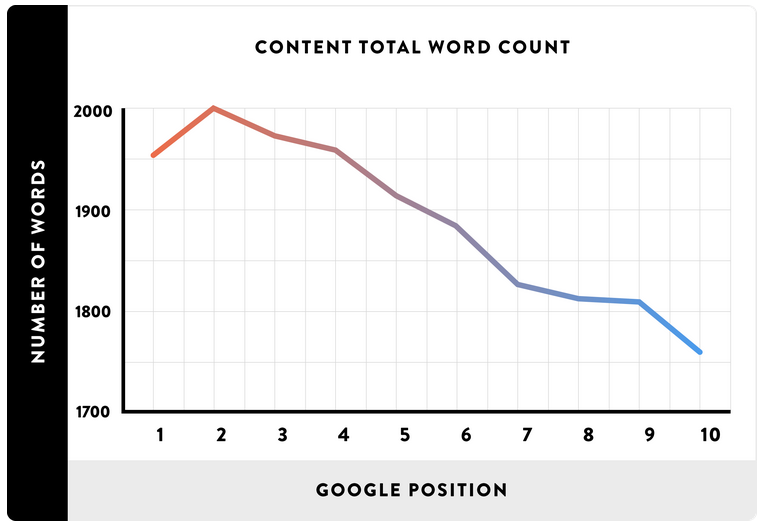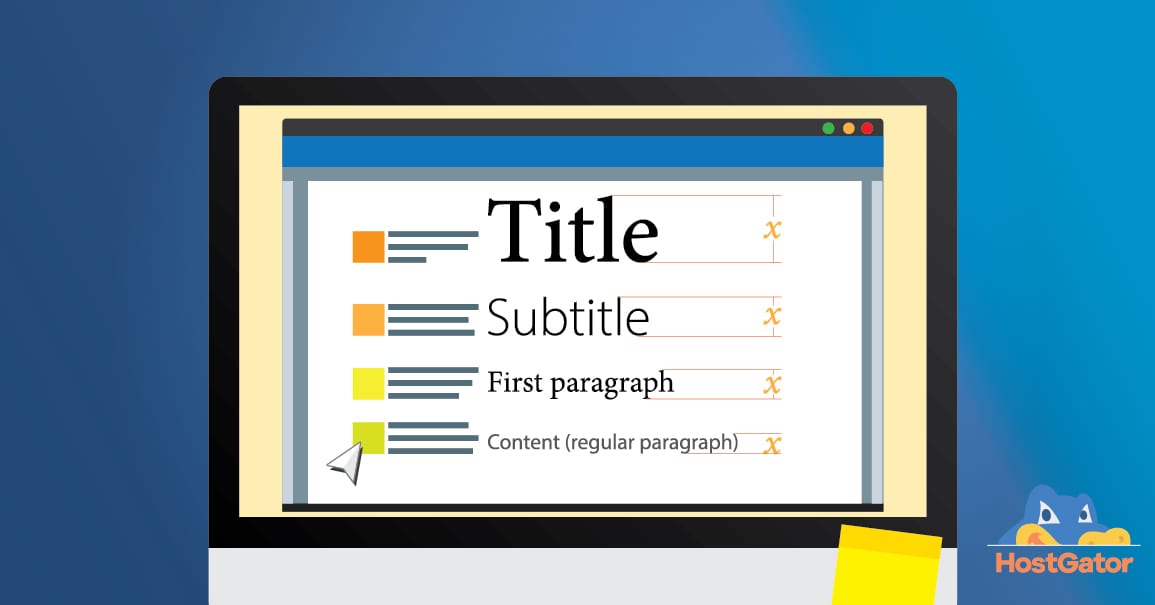Managing content for a successful inbound marketing strategy isn’t easy. You have to understand your audience. You also need to research the topics your visitors love to read. After that, you have to assign those chosen topics to your writers.
But your job doesn’t end even after they’ve turned in their work. Checking for grammatical and spelling mistakes is crucial. Choosing the right images is also essential.
Then there’s the last and most important part – making sure the content follows the website’s editorial guidelines. Unfortunately, not all content managers bother to do this. Some websites don’t even have editorial guidelines! That’s a big no-no if you want your content to convert visitors into paying customers. But why are editorial guidelines so important and what’s the best way to create them?
Why Your Marketing Team Needs Editorial Guidelines
Editorial guidelines dictate the style, tone, and structure of your content. The policies ensure the following:
- Consistency across website content. Editorial guidelines ensure all content conveys a unified brand voice. The brand voice is essential as it allows you to showcase a cohesive identity that will make you stand out from your competitors.
- Content quality. Editorial guidelines ensure content meets company standards and drives conversions.
- Efficiency. Editorial guidelines make the job easier for editors by setting clear and uniform standards. This helps cut down the time spent on each piece of content.
In other words, editorial guidelines allow brands to efficiently produce quality content that is in line with their brand identities.
7 Steps To Create Editorial Guidelines Of Your Own
If you don’t have editorial guidelines just yet, don’t fret. In this section, we’ll look at seven simple steps content managers can follow to create them.
Let’s get started.
1. Understand Your Audience
You have to understand your audience to create effective content. Editorial guidelines dictate the tone and style of that content. That means before you make those policies, you have to understand your audience.
In inbound marketing, your website content is there to attract visitors to your website. But you don’t just want any visitors. You want visitors who are likely to purchase your company’s products or services.
If you understand your target customers then you understand who you’re writing for. For this, a buyer persona (a representation of your ideal potential customer) will help. Here’s an example:
You can create this yourself or coordinate with your sales department. You’ll need to understand your potential customers’ needs and wants, their pain points, and their motivations. Only then can you write content that addresses them effectively.
2. Determine The Voice & Tone Of Your Brand
Once you know who your audience is, you can determine your brand voice and tone. For example, if you’re selling to young people and college students, your tone might be fun and lighthearted. If you’re targeting upper management at Fortune 500 companies, your best bet is a formal and authoritative tone peppered with facts and verifiable data.
Here are some common tone elements you should look at:
- Simple or complex language? For example, would you say “prefer” or “like”? “Elucidate” or “explain”?
- The sound of your sentences. Lyrical or straightforward? Alliteration and other linguistic devices?
- Syntax or sentence structure. Do you prefer long, flowery sentences or short, punchy ones?
The elements in content style guides should jibe with one another. For example, if you say you prefer simplistic and straightforward language, it might also make sense to request short and punchy sentences.
3. Define The Length Of The Content
Your website content should also be of an approximately similar length. What that length is will be determined by your target audience and their preferences.
For example, if your potential customers are senior managers who tend to be very busy, then relatively short pieces filled with facts and statistics will do. If your potential customers are highly detail-oriented and seeking in-depth and actionable information, then long-form content is best.
According to BKAcontent, the standard minimum word count length for a blog post is 500. That fills one Microsoft Word page at a font size of 11 or 12. Content Marketing Institute reported that anything above 2000 words is considered long-form content.
When choosing the content length, consider SEO, too. According to Coredna, long-form content performs better in Google search rankings than shorter content:

The rationale is simple: Google likes credibility, and that tends to come in the form of longer pieces of content. So to get better SEO rankings, aim for the kinds of complete content that are seen as more credible and authoritative.
4. Define Your SEO Preferences
You must also specify your link building preferences in your editorial guidelines. Ask yourself the following questions:
- What is the maximum number of allowable links in each blog post?
- Are writers allowed to link to external sources? If so, how many and under what stipulations?
- Are writers allowed to link to your competitors?
- Are writers allowed to link to internal blog posts? How many times?
If you want to promote particular blog posts and boost their search rankings, it makes sense to build internal links to those posts within other content. If you don’t want to boost another website’s SEO rankings, you can either forbid links to that site or mark them as no-follow.
According to Backlinko, pages with many backlinks fare better in Google search engine results than those with only a few. The number one result on a Google results page has an average of 3.8 times more backlinks than those in positions two to ten.
5. Establish Standards Of Quality Content
You’ll want to specify content quality standards in your editorial guidelines. This will help ensure consistency in quality. It will also standardize your criteria for publishing content on your website. Define your most important priorities and specify them in your guidelines, even if they seem obvious. Here are some you may wish to consider:
- Content must be comprehensive
- Content must have a targeted keyword.
- Content must be niche-relevant.
- Content must include actionable tips.
- Writers must cite their sources for any facts or statistics.
- Spelling and grammar must be impeccable.
Your criteria should also be based on your audience’s wants and needs. If you’re targeting ecommerce store owners, your criteria will likely be different to if you were targeting lawyers, for example.
6. Provide Guidelines For Use Of Images
There’s no question that your content should include images. According to Neil Patel, if you break up chunks of text with compelling images, you increase the chances people will finish reading your article. Articles with pictures also receive 94% more views than those without!
But you’ll need guidelines for images, too.
Do you require original images such as product photos or screenshots, or will stock photos do? What about graphs, charts, and infographics? Will you provide the images, or is the writer expected to source them?
Determine the image size and resolution as well. According to Snappa, the ideal WordPress featured image size is 1200 x 628 pixels. Image size may vary according to the theme. Images between 1500 and 2500 pixels wide are recommended for websites. If you want to optimize for mobile, the best image resolution for most smartphones is 640 x 320 pixels. The aspect ratio, however, should be maintained so the picture won’t be distorted.
7. Establish Stylistic Guidelines for Editing & Proofreading
You’ll need to establish certain stylistic rules in your editorial guidelines that your editors and proofreaders will need to abide by. There are no right or wrong answers here. It all depends on your preferences and what makes sense for your business.
If many of your readers are from the United States, you might specify that American English should be used. If, on the other hand, many of them are from the United Kingdom or from other English speaking countries, you might use British or International English. You might also wish to specify things like whether you wish writers to use the Oxford comma, and whether numbers should be spelled out or written as digits.
You can be as detailed as you want. I also recommend using a grammar checker to catch any sneaky grammatical issues at the editing stage.
The Bottom Line
Editorial guidelines are vital to ensuring the quality and consistency of website content. Content quality is important because it is what drives potential customers to your website. Content consistency is critical to building brand awareness with a recognizable voice.
Editorial guidelines also help ensure the efficiency of content creation. With the right policies, editors can do their job quickly and easily, cutting down the time required for content production.
In other words, all websites need editorial guidelines. I’ve outlined a simple process you can follow to create those. Now it’s over to you. Just remember to keep your audience’s preferences and needs front and center. In no time, you’ll have a set of guidelines that will help generate the kind of content that converts website visitors into paying customers.




![Yes, B2B Websites Can Use Personalization Too [Here’s How]](https://mdvirtue.com/wp-content/uploads/2022/02/Yes-B2B-Websites-Can-Use-Personalization-Too-Heres-How-400x250.jpeg)

0 Comments